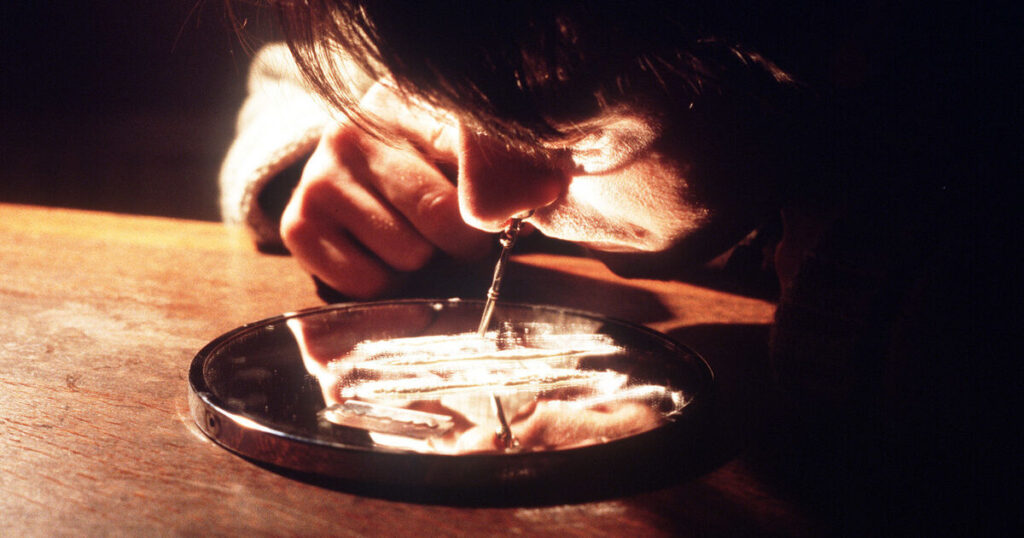Ireland is facing a “perfect storm” regarding cocaine, characterized by increased availability, higher purity, and lower prices, according to new research.
Leading drug experts in the country have noted that various indicators are consistently pointing towards a worsening issue, cautioning that there’s potential for “further increases” in cocaine use and its associated harms.
They stated that their research findings, which revealed a significant surge in cocaine-related hospital admissions, likely only represent “the tip of the iceberg” in terms of overall emergency department attendances, as research suggests that only about a fifth of these visits result in hospital admission.
The authors emphasized that significant funding is “essential” to address the problem and stressed the importance of harm-reduction initiatives to minimize overdoses and fatalities.
The study was spearheaded by a team from the Health Research Board (HRB), Ireland’s foremost drug research agency, supported by academics and clinicians from UCC, TCD, and the HSE.
“Given this perfect storm of increased availability, higher purity, and greater affordability, there’s a potential for further increases in rates of use and related harm,” the study concluded.
The authors highlighted that this was, to their knowledge, the first study in Europe to comprehensively analyze cocaine-related harm using a range of indicators over an extended period.
Based on data from five different sources, the research uncovered the following:
- Cocaine-related discharges from acute hospitals have drastically increased from 1.4 per 100,000 people in 2000 to 24.3 per 100,000 in 2023.
- Cocaine-related psychiatric admissions have risen from 0.24 to 2.4 per 100,000 population between 2000 and 2022.
- Cocaine treatment (as the primary drug problem) has surged from 1.5 to 93.2 per 100,000 people between 2020 and 2023.
- Last year, cocaine use among 15-64-year-olds increased from 1.1% in 2002/03 to 2.4% in 2022/23.
- Cocaine-related fatal overdoses have climbed from 0.13 to 2.6 per 100,000 between 2000 and 2020.
The research, published in ‘BMC Public Health’, emphasized a “major strength” of the study stemming from the use of diverse national databases that encompassed the entire Irish population, coupled with the fact that “all data sources provided consistently similar trends.”
The analysis demonstrated not just a similar overall trend between 2000 and 2023 but also similar fluctuations in the interim, with increases between 2000 and 2007, followed by decreases until approximately 2011-2013.
Since then, there has been “a consistent and significant increase” across all indicators of cocaine-related harm.
The research noted that the data on cocaine hospital discharges “likely represent the tip of the iceberg regarding acute cocaine-related health problems.”
The research suggests that only 22% of cocaine-related emergency department visits ultimately lead to hospital admissions.
The report indicated that COVID-19 appeared to have had minimal impact on cocaine-related harm trends in Ireland, “suggesting that restrictions associated with the pandemic did not have a major influence on cocaine supply.”
It also observed that “to some extent,” fluctuations in cocaine usage mirrored the state of the Irish economy since 2000, with the surge leading up to 2007 coinciding with the Celtic Tiger economic boom, and the subsequent drop in cocaine use aligning with the deep recession between 2008 and 2012.
The study revealed that the increase in cocaine use since 2000 has occurred despite “a substantial increase” in cocaine seizures — from 566 in 2003 to 4,020 in 2022.
The research emphasizes that “cocaine use has become a significant public health issue,” thus highlighting the need for harm reduction strategies “targeted at reducing overdoses, injuries, and other health harms.”
The ‘Irish Examiner’ reported last week that around a tonne of cocaine has been seized so far this year and a record 3.45 tonnes in 2023. This compared to a yearly low of 52kg and a high of 138kg between 2016 and 2021.


